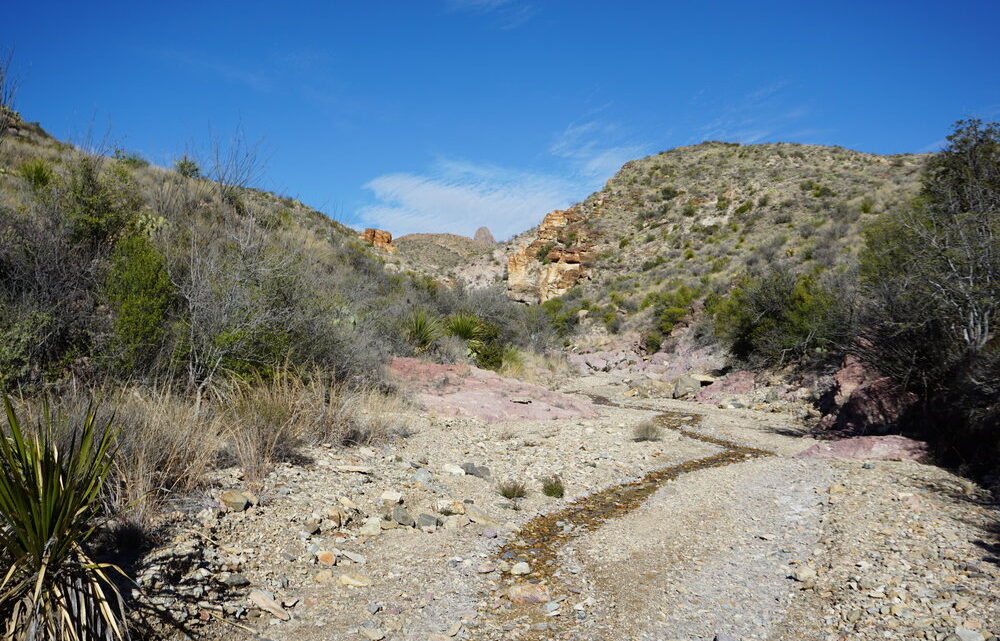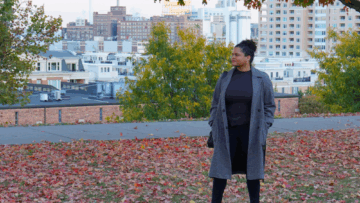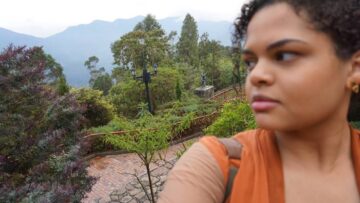My first time in Texas’ Big Bend National Park was also my first time backpacking. I knew the 6-day backpacking expedition would be extremely challenging, but I didn’t understand how challenging until I did it. Still, the naturally diverse desert of Big Bend was worth the effort. Here is my day-by-day account of backpacking in the Big Bend Texas desert.
Day One
Our first day was a half day since we spent much of it driving to where we would start hiking. We hiked almost two miles and that was long enough for me as I got used to the weight of my backpack. We found a place to camp that had a great view of the Mule Ears, a set of mountains that got its name from the two peaks sticking up above the range.
This camping area was very flat and what you typically think of when you picture the desert, with prickly pear and other cacti surrounding us. This was the first night sleeping under the stars, which was breathtaking, and we woke up to a gorgeous sunrise.
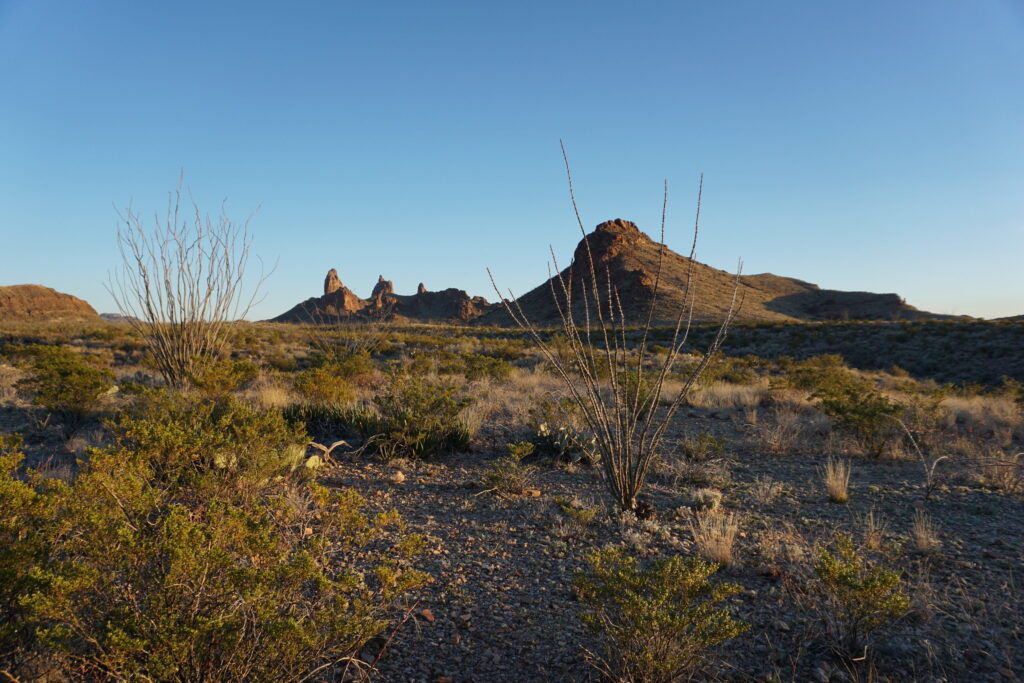
Day Two
Hiking the next day was much more difficult. We were gradually walking uphill and through a wash most of the day. A wash is a dry stream bed that seasonally fills with water after rain. The ground is covered in rocks, making the experience almost like walking through sand. The only thing that made the physical discomfort better was the scenery and a break at a freshwater spring. When we found a campsite, it was much different than the last one. It was on top of a hill with a lot more brush covering the ground, making it harder to stay clear of spiky cacti when choosing a spot to sleep. I also noticed many more tarantula holes in the ground which made me a bit nervous, but they like to avoid people.
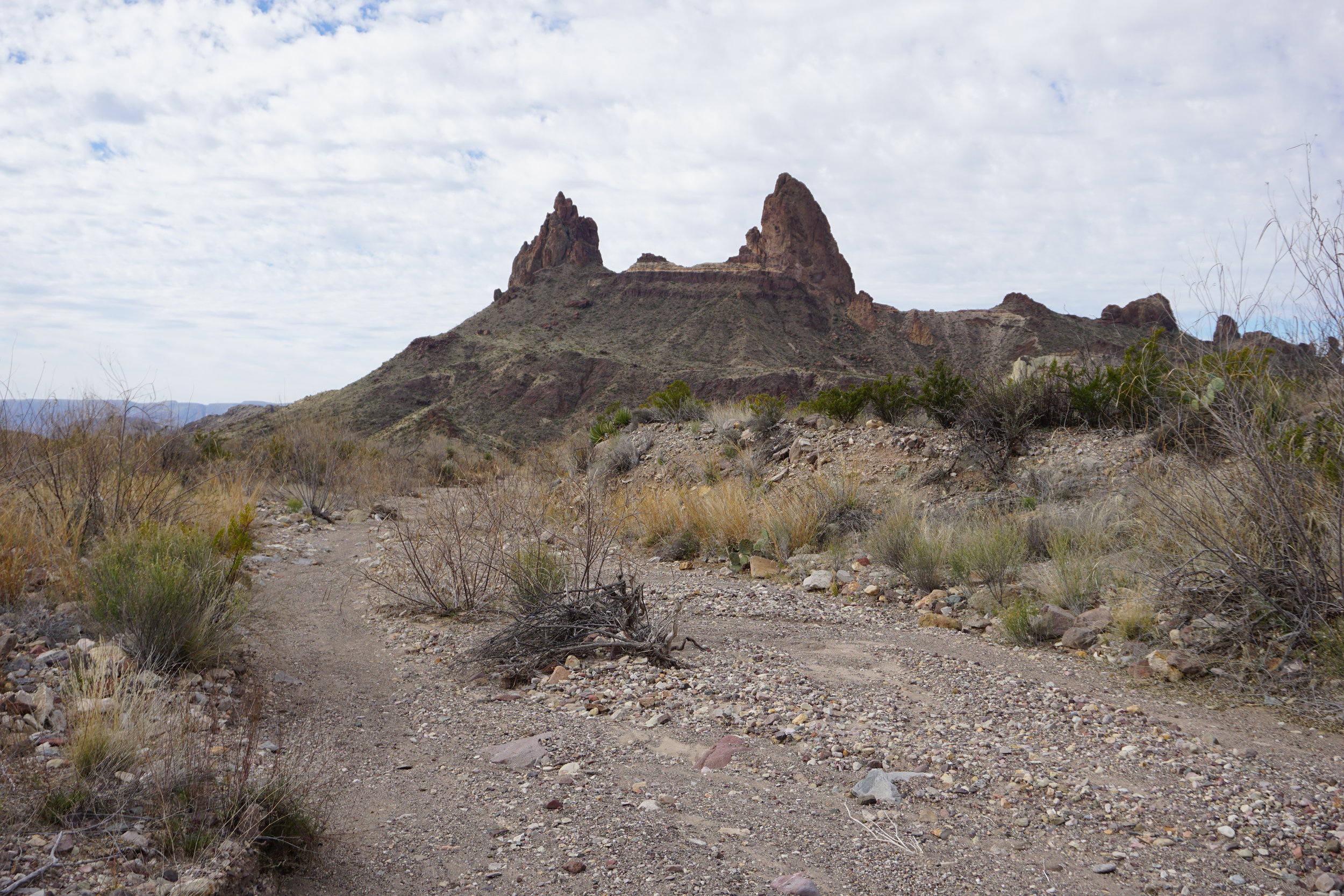
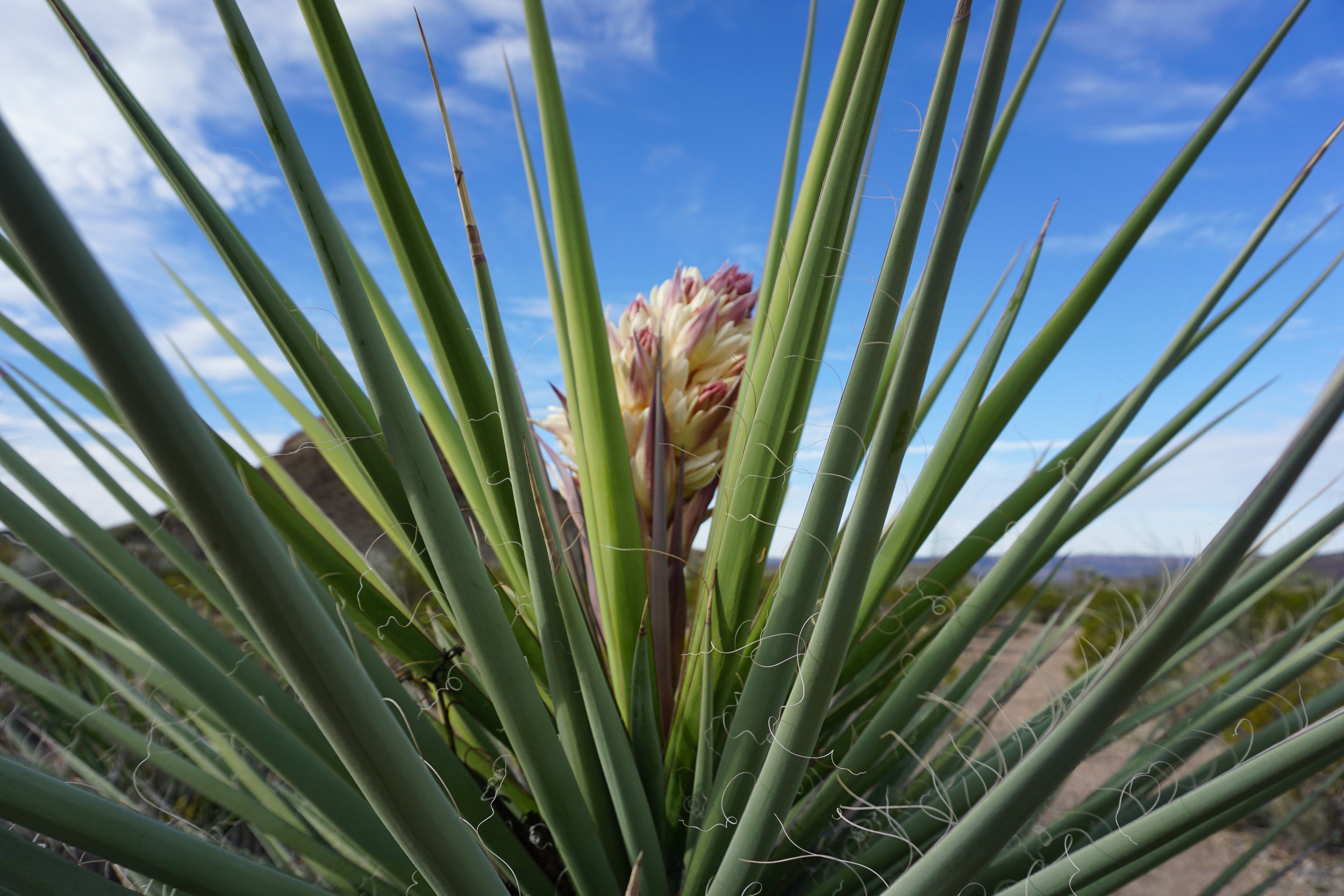

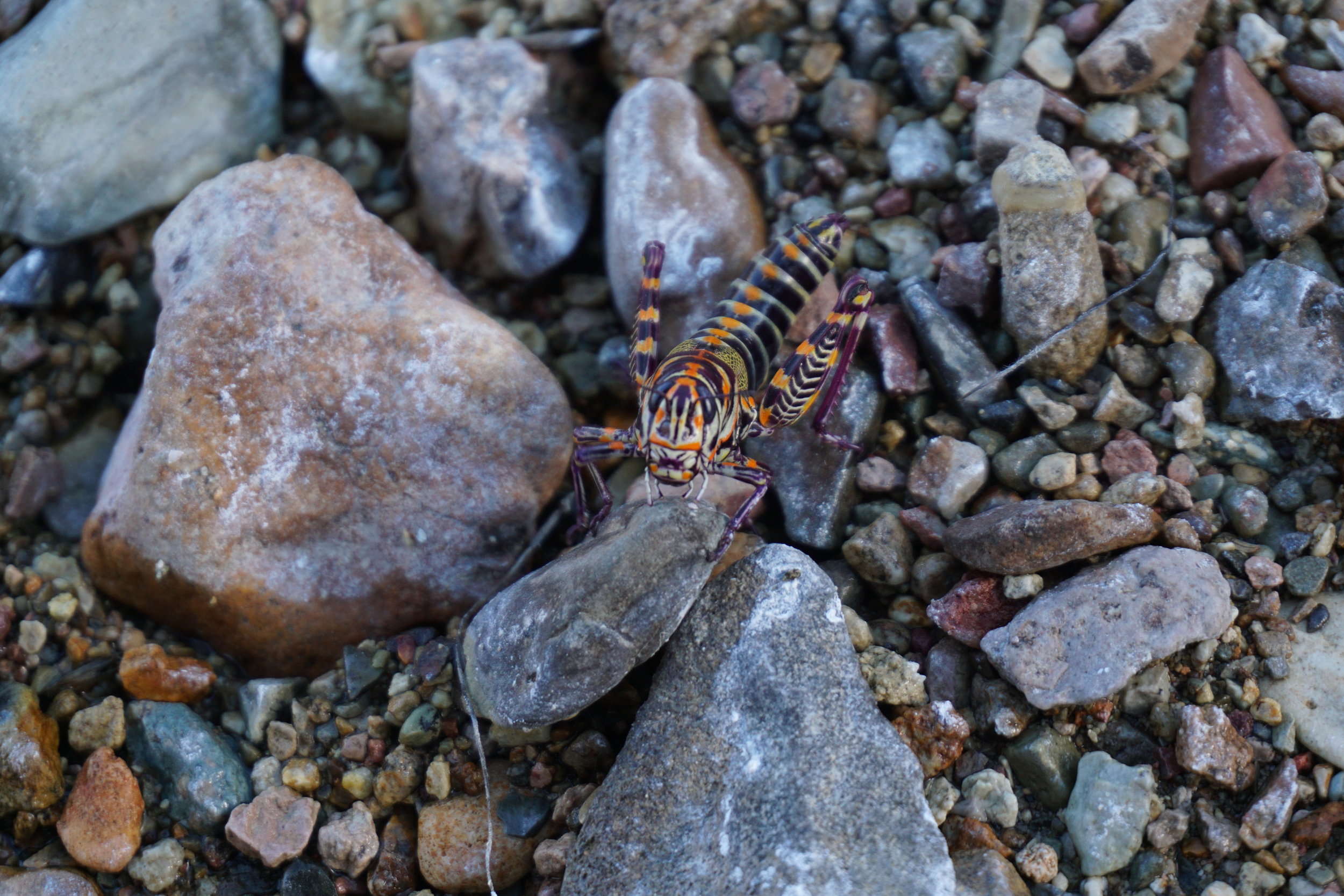


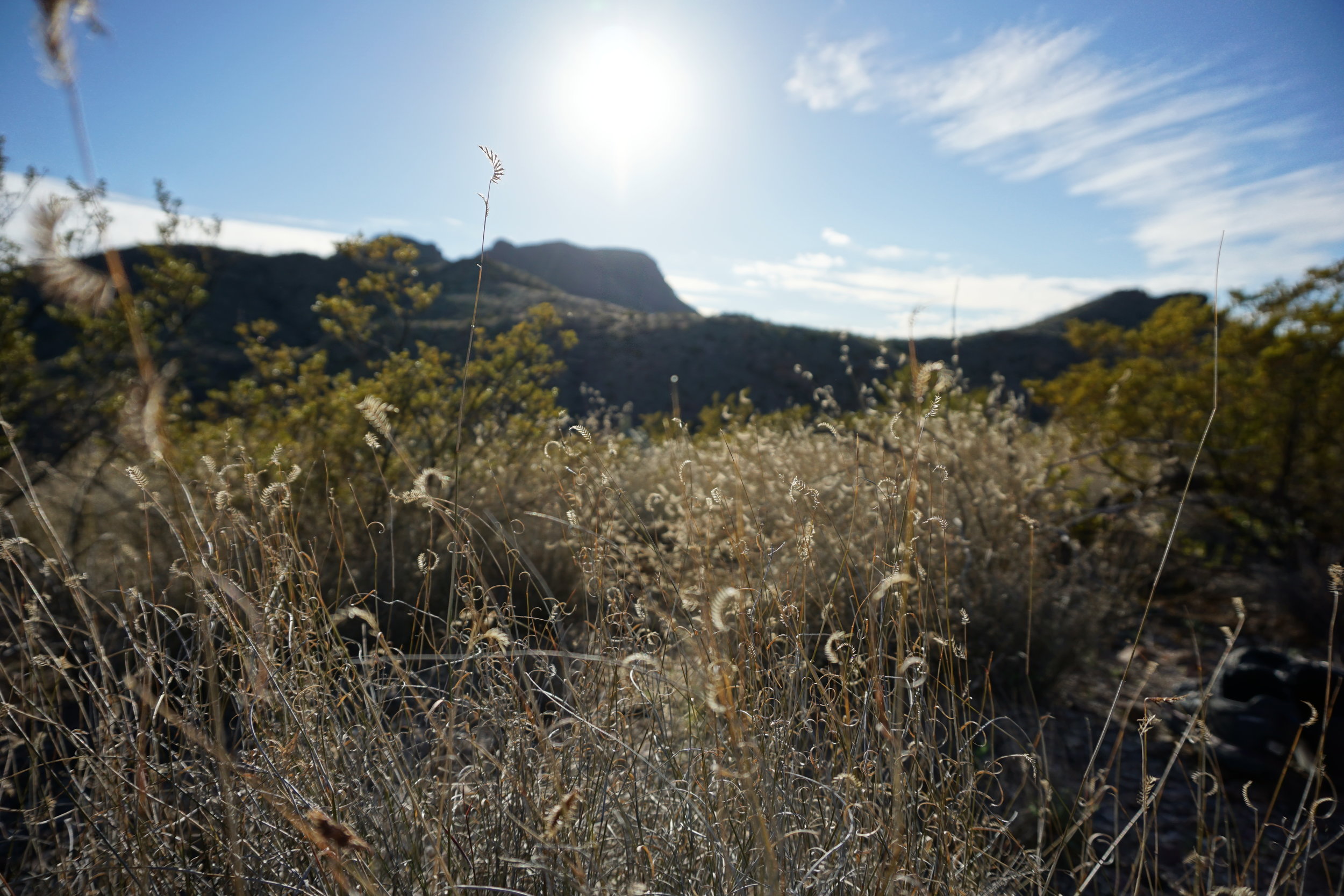

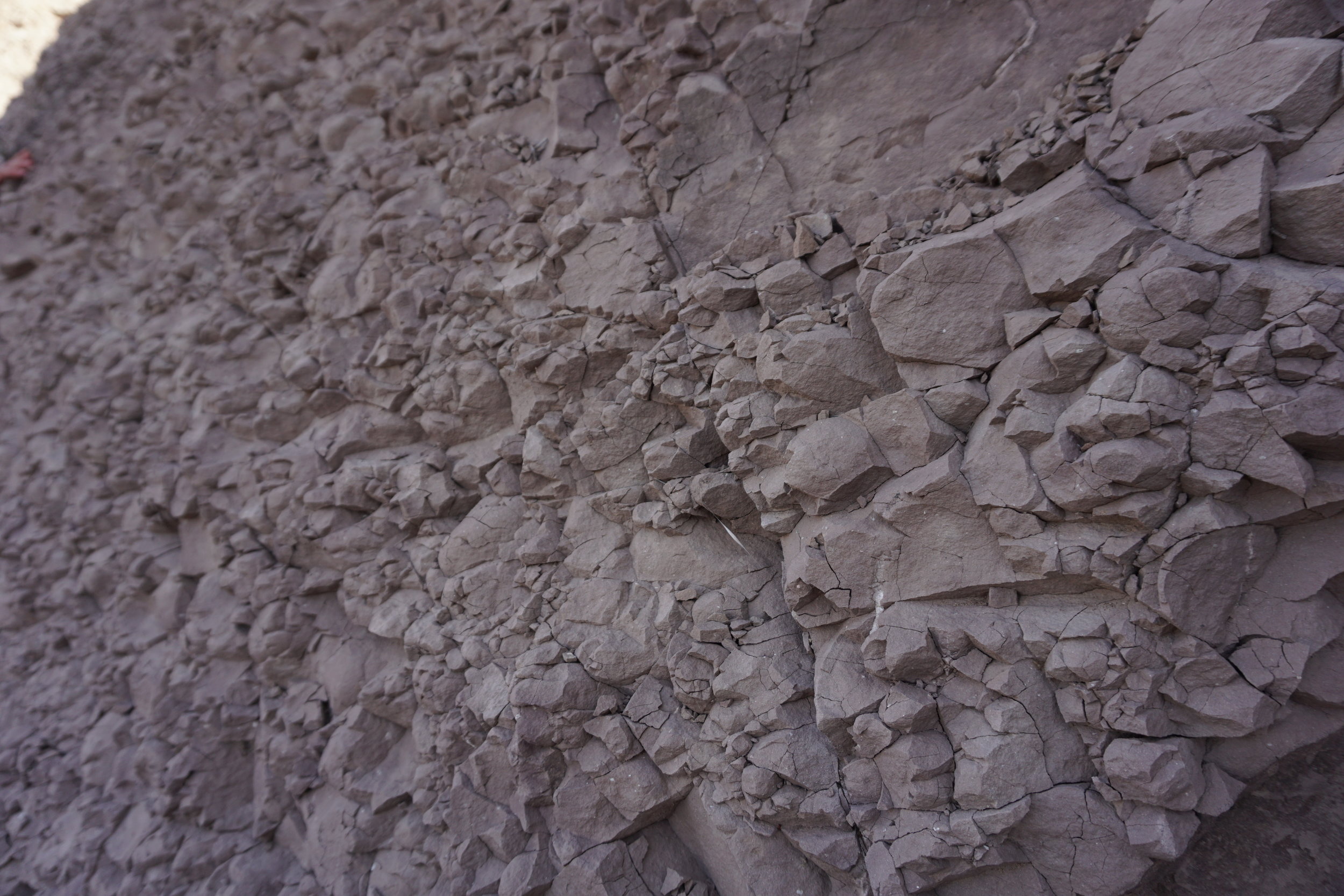
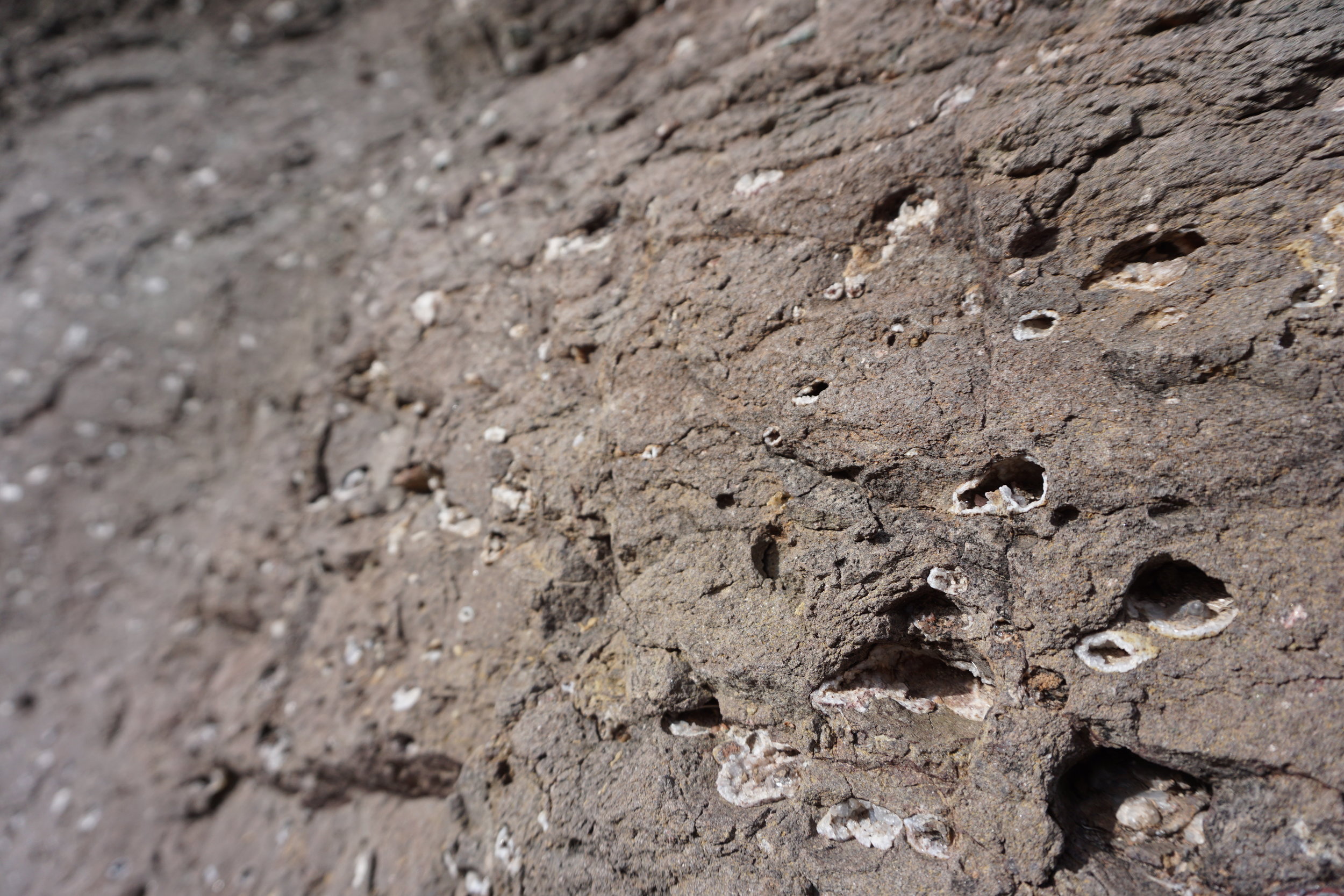
Day Three
Hiking on day three was still difficult, but the monotony of hiking in a wash was broken up by having to climb up boulders where small waterfalls were flowing. Climbing and being able to use my arms was actually a relief from all the stress on my legs. For most of the hike, we followed a small stream so we didn’t have to carry as much water. We found our campsite nearby. Staying warm while sleeping was a challenge throughout the trip. On this night, I found my lower body to be so warm I was sweating, but my upper body still freezing cold. Sleeping comfortably was something I never achieved.

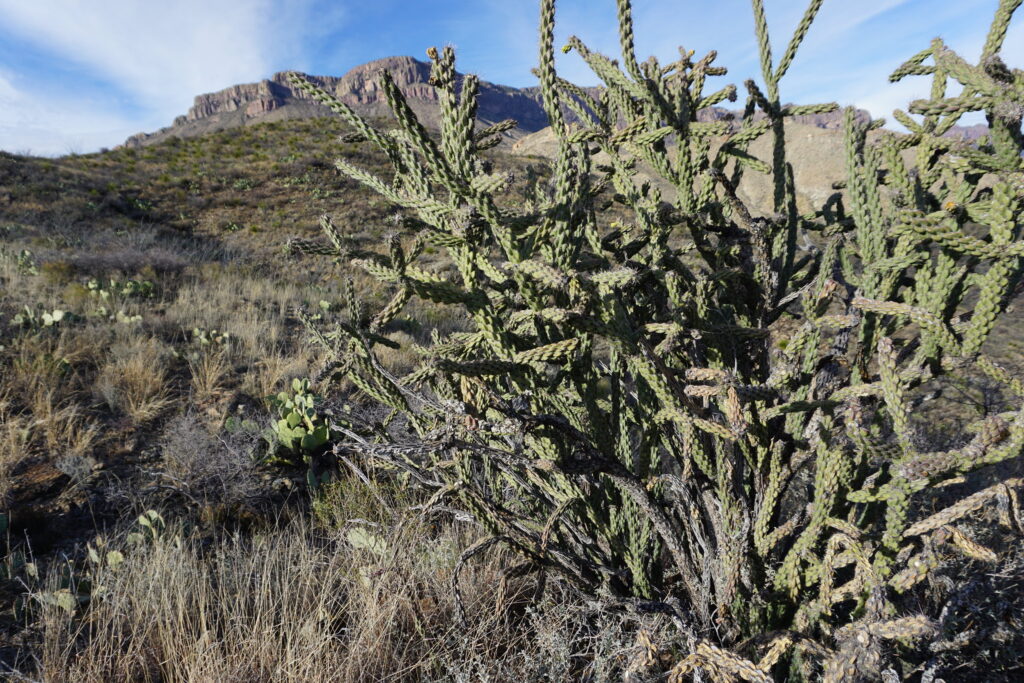
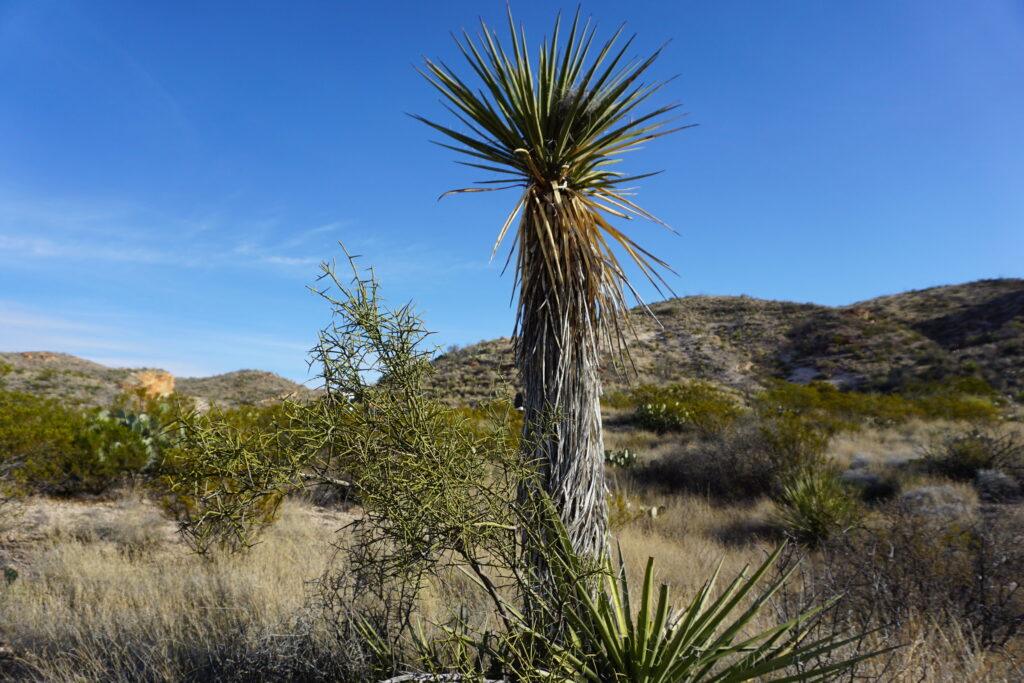


Day Four
Day four’s hike was a short one since half of the day was devoted to solo time. During this time, we could reflect on our experience while completely alone. The instructors gave us a writing prompt, so I completed it and then did some journaling and list-making. I also got some nice selfies with mountains as my backdrop and unintentionally got a very intense tan. Even though I got a little restless during the 5-hour solo time, it was nice to relax, do some internal reflection, and really appreciate my surroundings.

Day Five
The fifth day was by far the hardest day of the entire trip for me. We hiked uphill all day and had to carry more water in our packs than before since we wouldn’t pass any water sources for a while. At one point, I felt like I was going to hyperventilate. I was out of breath and my heavy pack was pulling at my chest, making it hard to breathe. I didn’t hyperventilate, but by the end of the day every part of my body hurt and I had blisters on each foot.
A great part of this day was when we reached our water source. I didn’t know that the desert had such diversity. This area was basically a forest with leaves covering the ground and a stream/small waterfall. It was the perfect place to cool down under the cover of trees and get refreshed before starting out again.
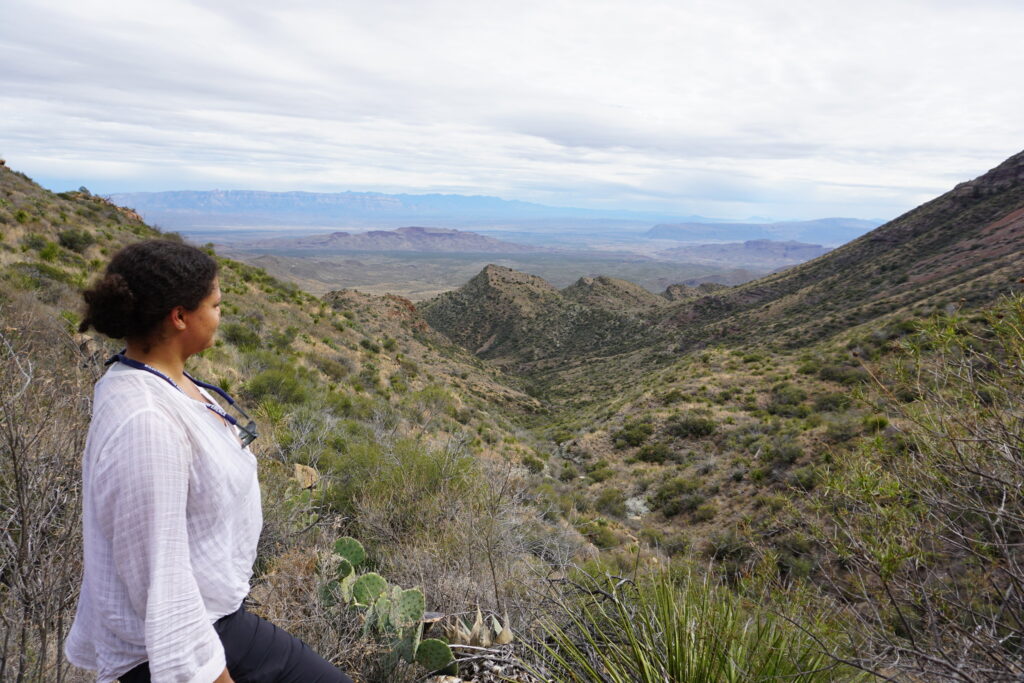
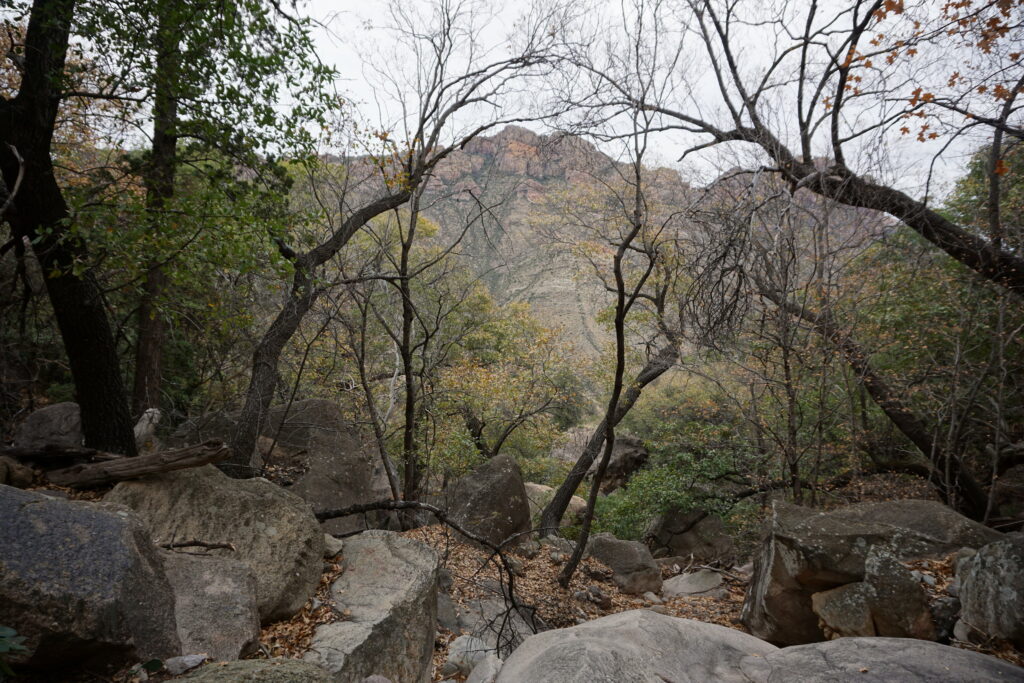
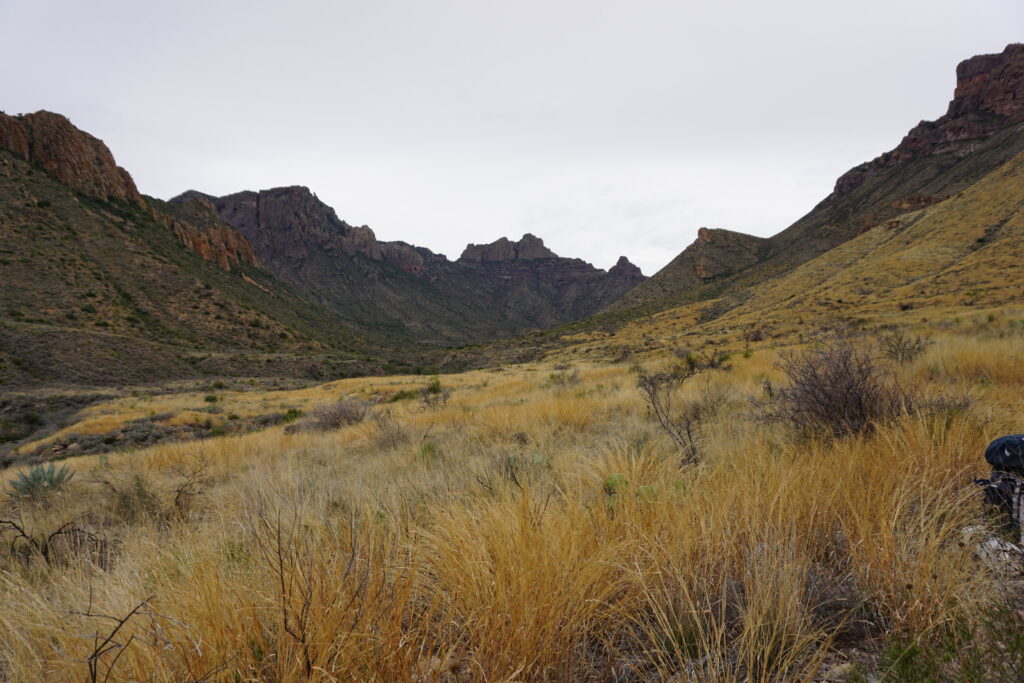

Day Six
We woke up at 5 am to hike in the dark to Emory Peak, where we’d watch the sun rise. This was also a difficult hike, but shorter and not totally uphill. I was irritated that we still had a lot of uphill hiking to do, but once we got closer to the peak the view was worth it. We had to climb up some boulders to get to the very top. Once we did, we had a 360 degree view, including a gorgeous sunrise. We could see in the distance where we started our journey and how far we’d come.
Afterwards, we had lunch and we began our hike downhill to the basin where the visitor’s center is located. From there, we got picked up and taken to another location for a few hours of rock climbing along the Rio Grande. The next morning, we all headed home.
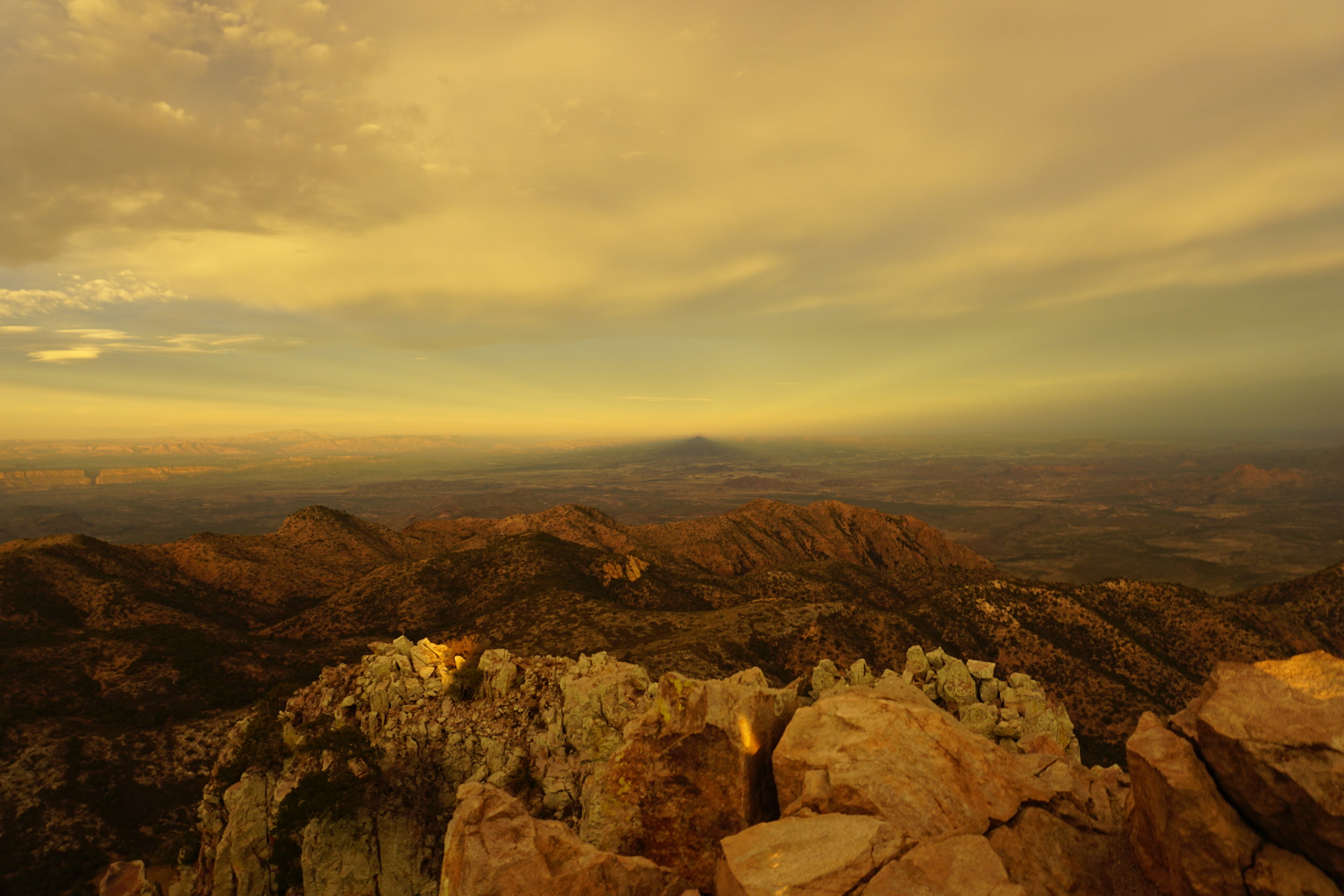
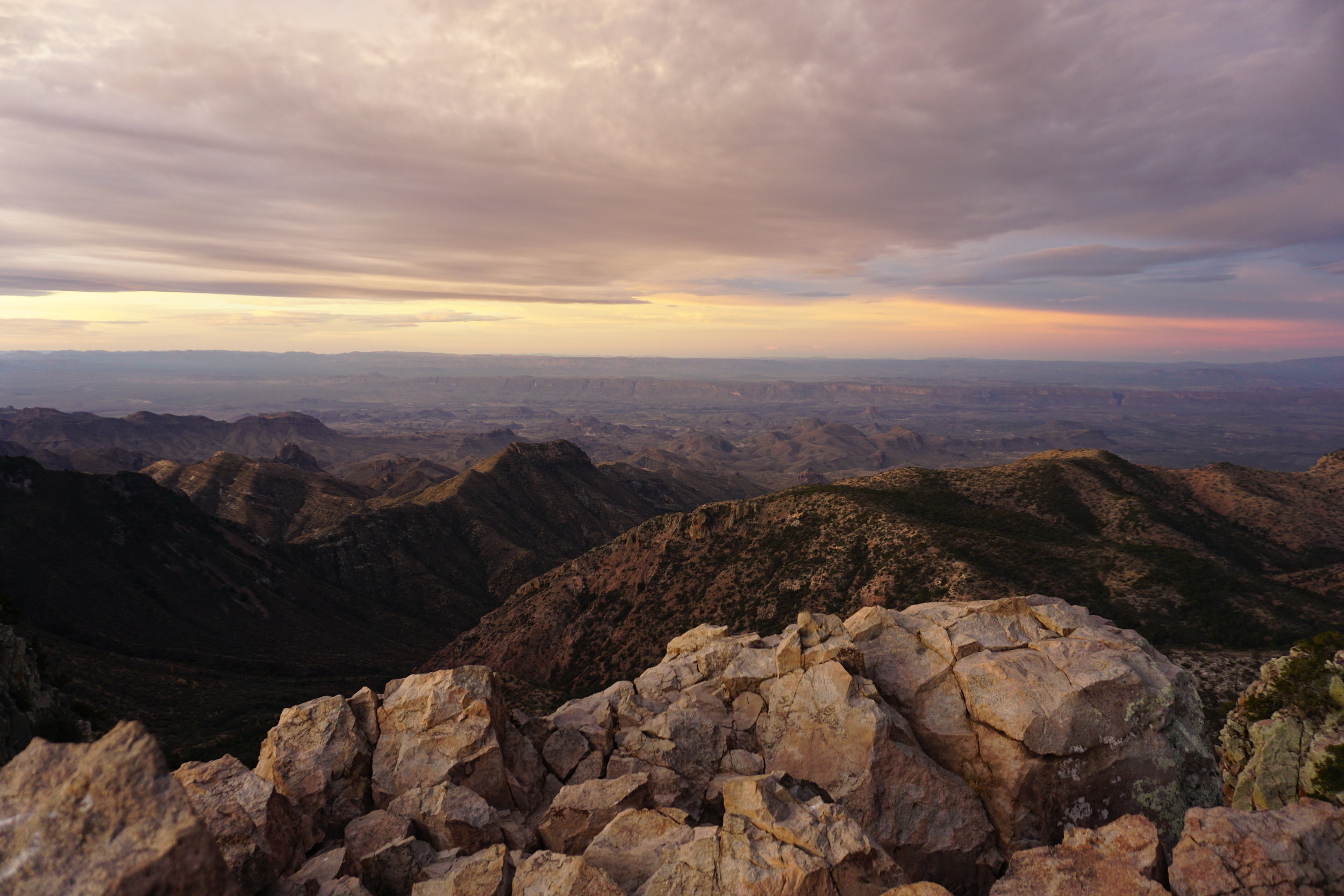
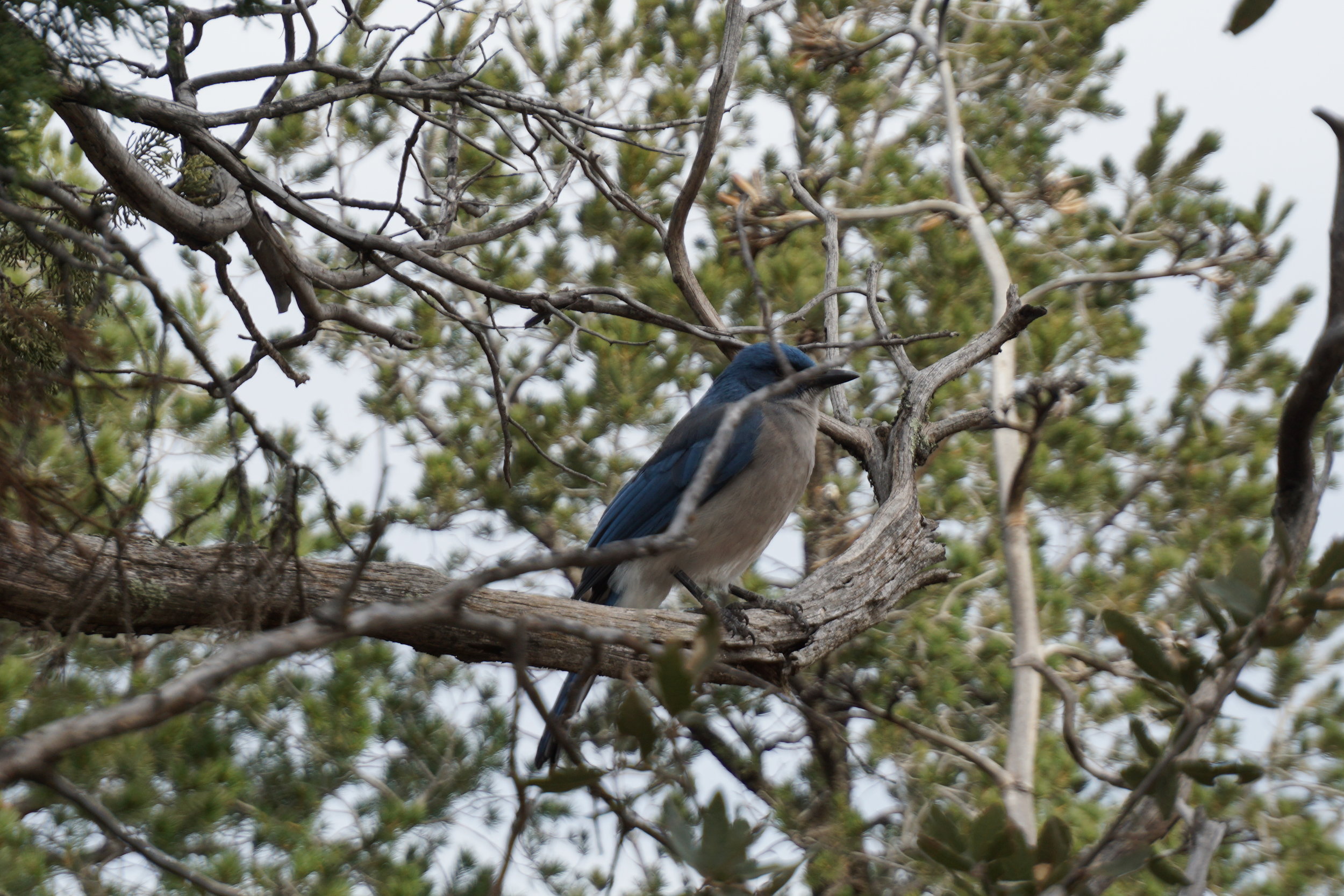
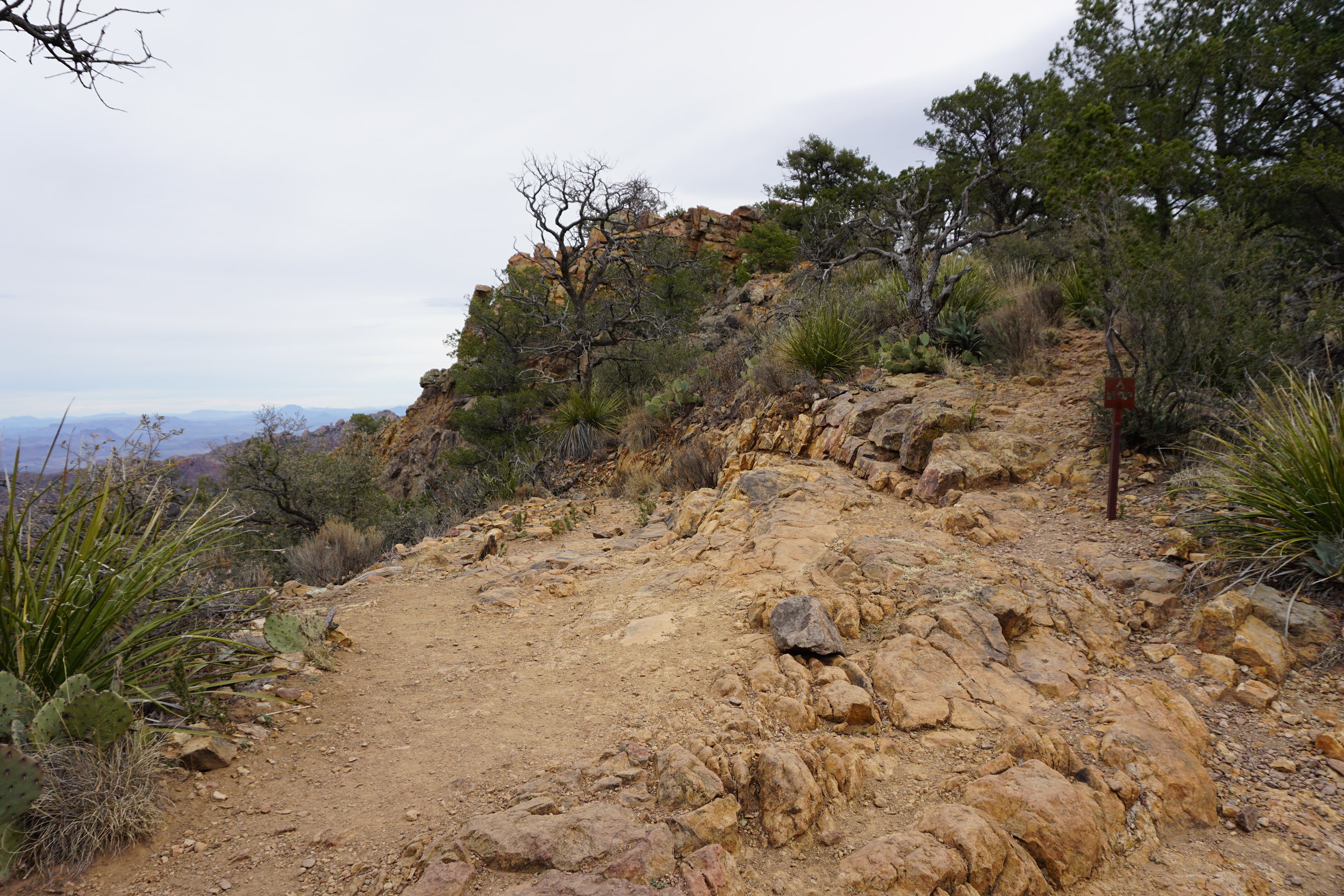
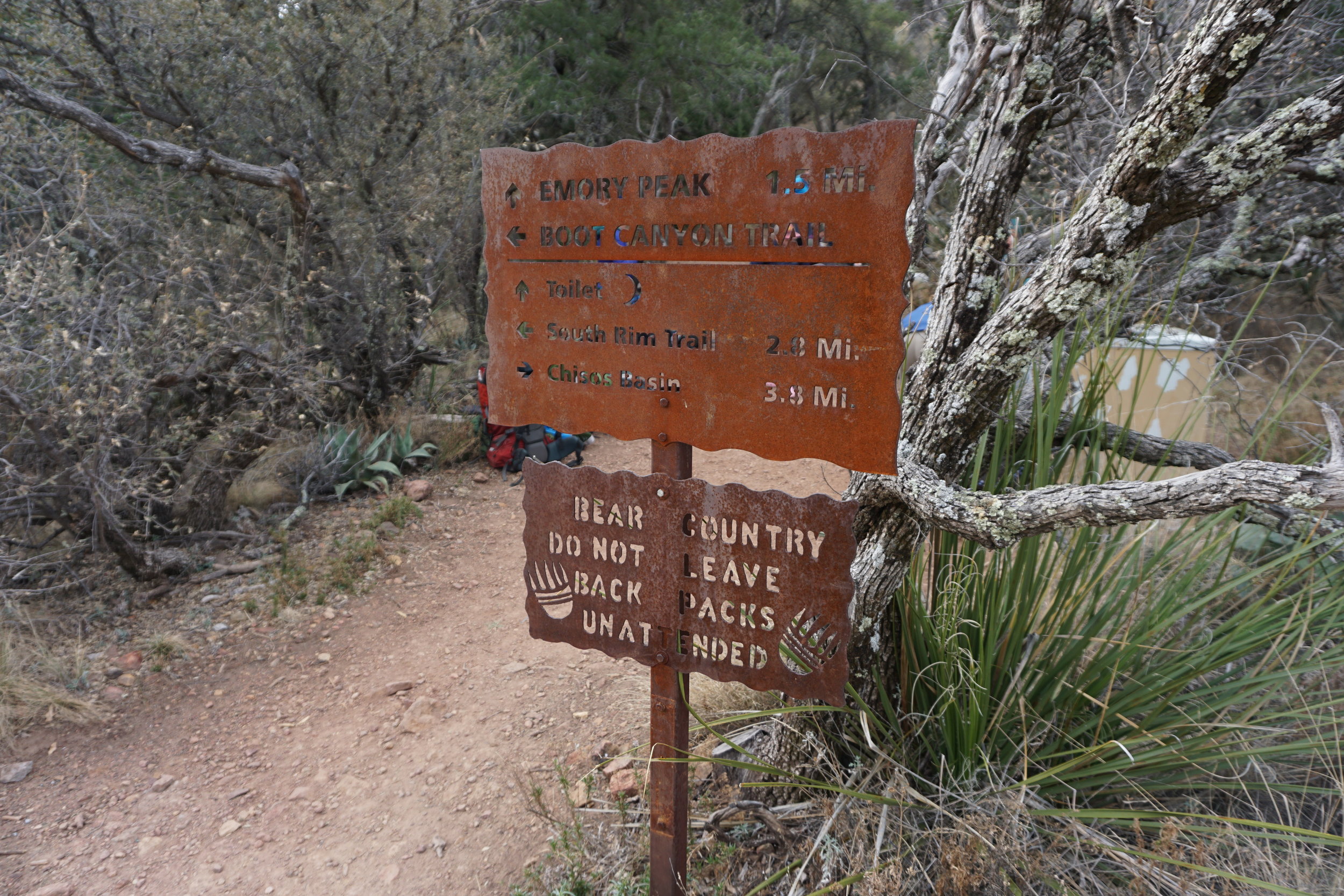

In hindsight, backpacking in the Big Bend Texas desert was the most difficult thing I’ve ever done physically, but I’m glad I did it. When I was still on the trip, someone asked me if I’d do it again. I hesitated before saying maybe. Now that I’m comfortably at home, I start to forget about the physical discomfort and focus on its impact. I learned that I need to do better at asking for help when I need it. I learned that I’m incredibly capable of pushing through discomfort to achieve a goal. This caused me to reflect on how I’ve done the same in my personal life when dealing with social anxiety, depression, and all kinds of other challenges.
Now when asked the same question, I’m quick to say yes.
Would you consider backpacking in the Big Bend Texas desert? Let me know in the comments!
If you liked this, check these out:
Your New Mexico and Southern Colorado Road Trip Itinerary
How to Explore Mexican Culture, Art, & History in El Paso, Texas
Home of the Blues: Discovering Clarksdale, Mississippi
Road Tripping Through New Mexico
Pin It for Later:

